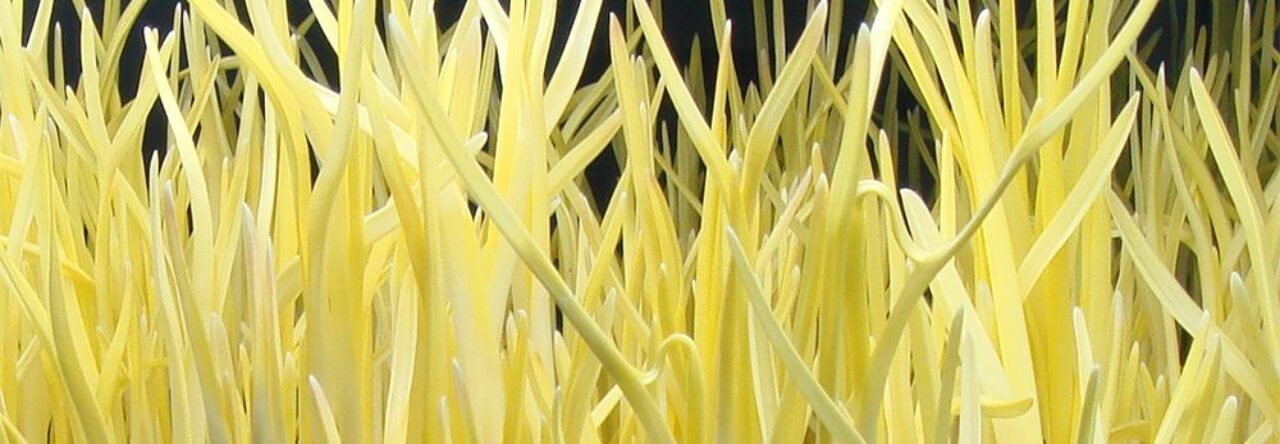2008年1月22日付 国立癌研究所(米国)発表の概況報告書
題名「ニンニクとがん予防」
出典: http://www.cancer.gov/about-cancer/causes-prevention/risk/diet/garlic-fact-sheet
一部抜粋:
【日本語訳(Google翻訳)】
集団研究からの知見は、ニンニクが癌を防ぐことができるという証拠を提供しているのか?
いくつかの集団研究は、ニンニクの増加摂取と胃、大腸、食道、膵臓、および乳房の癌を含む特定の癌、リスクの低下との関連性を示している。集団研究は、病気の原因、発生率、または広がりを調査または健康関連介入、食事と栄養摂取、または環境曝露の影響を調べる人口グループの学際的な研究である。 7集団研究からのデータの分析は、胃のリスクおよび結腸直腸癌低く、消費生および調理ニンニクの量が高いことが示された。
がんと栄養(EPIC)にヨーロッパの前向き研究は10カ国から男女を含む継続的な多国籍の研究である。この研究は、癌に対する栄養の影響を調査している。研究では、タマネギとニンニクの高い摂取量は、腸のがんリスクの低下と関連していた。
アイオワ女性の研究は、食事、体脂肪、および他の危険因子の分布が高齢女性の癌の発生率に関連しているかどうかを調査する大規模な前向き研究である。調査から得られた知見は、ニンニクの消費量と大腸がんリスクとの間に強い関連性を示した。ニンニクの最高量を消費する女性は、ニンニク消費量の最低レベルを持っていた女性と比較して遠位結腸の癌の50%より低いリスクを持っていた。
中国で行われ、いくつかの集団研究は、ニンニクの消費と癌のリスクを中心に。ある研究では、研究者らは、ニンニクと玉ねぎとチャイブの様々な種類の頻繁な消費は消費より高いレベルに見られる大きなリスクの削減と、食道と胃のがんのリスク低下と関連していたことがわかった。同様に、別の研究では、アリウム野菜、特にニンニクと玉ねぎの消費が、胃がんのリスク低下に関連した。第三の研究では、アリウム野菜の多い摂取は、特に、ニンニク、ネギ(1日未満の2.2グラム対日あたり10以上g)は、前立腺癌のリスクを約50%削減と関連していた。
証拠も増加したニンニク消費が膵臓癌のリスクを減少させることを示唆している。サンフランシスコのベイエリアで行われた研究は、膵臓癌リスクが低い量を食べた人たちと比べてニンニクを多量に食べた人に54パーセント低かった見つけた。
また、フランスの研究は、増加したニンニク消費は乳癌リスクの統計学的に有意な減少と関連していたことがわかった。総カロリー摂取量および他の確立されたリスク要因を考慮して、乳癌のリスクは、繊維、ニンニク、タマネギのものがかかり、より多くの量が減少した。
【原文】
Do findings from population studies offer evidence that garlic may prevent cancer?
Several population studies show an association between increased intake of garlic and reduced risk of certain cancers, including cancers of the stomach, colon, esophagus, pancreas, and breast. Population studies are multidisciplinary studies of population groups that investigate the cause, incidence, or spread of a disease or examine the effect of health-related interventions, dietary and nutritional intakes, or environmental exposures. An analysis of data from seven population studies showed that the higher the amount of raw and cooked garlic consumed, the lower the risk of stomach and colorectal cancer.
The European Prospective Investigation into Cancer and Nutrition (EPIC) is an ongoing multinational study involving men and women from 10 different countries. This study is investigating the effects of nutrition on cancer. In the study, higher intakes of onion and garlic were associated with a reduced risk of intestinal cancer.
The Iowa Women’s Study is a large prospective study investigating whether diet, distribution of body fat, and other risk factors are related to cancer incidence in older women. Findings from the study showed a strong association between garlic consumption and colon cancer risk. Women who consumed the highest amounts of garlic had a 50 percent lower risk of cancer of the distal colon compared with women who had the lowest level of garlic consumption.
Several population studies conducted in China centered on garlic consumption and cancer risk. In one study, investigators found that frequent consumption of garlic and various types of onions and chives was associated with reduced risk of esophageal and stomach cancers, with greater risk reductions seen for higher levels of consumption. Similarly, in another study, the consumption of allium vegetables, especially garlic and onions, was linked to a reduced risk of stomach cancer. In a third study, greater intake of allium vegetables (more than 10 g per day vs. less than 2.2 g per day), particularly garlic and scallions, was associated with an approximately 50 percent reduction in prostate cancer risk.
Evidence also suggests that increased garlic consumption may reduce pancreatic cancer risk. A study conducted in the San Francisco Bay area found that pancreatic cancer risk was 54 percent lower in people who ate larger amounts of garlic compared with those who ate lower amounts.
In addition, a study in France found that increased garlic consumption was associated with a statistically significant reduction in breast cancer risk. After considering total calorie intake and other established risk factors, breast cancer risk was reduced in those consuming greater amounts of fiber, garlic, and onions.
